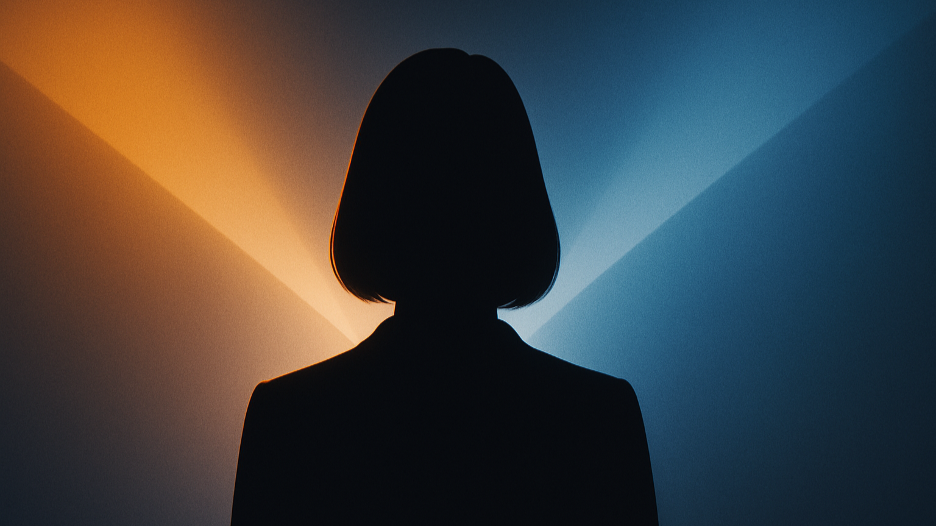Article
Reducing Silo-Mentality and Getting Teams to Collaborate
August 24, 2020

Develop A Collaborative Environment
The team leader plays a key role in creating a team culture or climate. If you want to work with a team where there’s an expectation that people will collaborate, and where team members actively look for ways to support one another, it is up to you to consciously build that team.
When assembling a team, whether new hires or from within the organization, look for people who are team players. That means that their competitive spirit is aimed at achieving goals and winning for the team, rather than on raising their own status or trying to one-up their colleagues. Some people view the world as a zero-sum game, where there are limited resources and they must compete to get their fair share. This is the opposite of an attitude of abundance that assumes that we can all win if we work together and there is enough for everyone. Competitiveness is fine when it comes to the organization’s external competitors but has a decidedly negative impact when it is social competitiveness and winning at the expense of other team members.
Our own research at Hagberg Consulting Group makes this abundantly clear. Social competitiveness – people who feel the need to compete with their co-workers – is negatively correlated with openness to input, listening, building partnerships, building relationships, information sharing, and forthrightness. Not the profile of an effective team member!
Stack ranking is a procedure, popularized in the 1980s by GE’s CEO Jack Welch, of ranking employees according to a bell curve. In that system, the top 10% are designated as top performers, while the bottom 10%, seen as a drag on the organization’s effectiveness, are routinely let go. Stack ranking fosters internal competition of employee vs. employee as they strive for high marks, and it stifles innovation. “In a hyper-competitive workplace,” wrote Max Nilson in Business Insider, “where management is essentially asking employees to outperform the people sitting next to them, employees don't have an incentive to share ideas or collaborate.” People focus on their own performance, “rather than working together toward broader goals. And at its most extreme, employees may focus on preventing others from excelling.” After all, you might not want to help a fellow team member because you may be the one who gets fired if he does better than you. [“Why Stack Ranking Is A Terrible Way To Motivate Employees,” Max Nilson, Business Insider Nov. 15, 2013] No wonder people experienced it as a morale killer.
On the other hand, here are some suggestions for building a collaborative, cooperative environment:
- Strengthen relationships. It is important for the leader to continually look for ways to build cohesion and strengthen relationships and bonds between members. Whether it is a meeting whose primary focus is helping team members get to know each other in more depth, a team dinner once a month, or a planning off-site that includes activities that help members get together just for fun and socializing, can go a long way toward increasing team coherence. Also, beware of having such a rigorous and rigid agenda-focus in your meetings that you don’t leave any time for informal discussion and personal sharing. This may not always be possible or desirable, but should be built in whenever feasible.
- Encourage communication between team members. The team leader also needs to encourage communication between team members and avoid relying on the “hub and spoke” style, where communication is primarily one-on-one between the leader and individuals. That style is familiar and comfortable for independent-minded entrepreneurs, but it is not helpful for building teams or evolving solutions to complex problems that require communication and collaboration among various specialties. Encourage team members to develop deeper connections amongst themselves, so that decisions do not always revolve around you. (Why? Because if you are not available at crunch time, how will decisions be made?)
- Beware of silos. In rapidly growing organizations there is always a threat that organizational silos will develop, and teams will focus narrowly on their own agendas and priorities, even to the point of resenting or stereotyping “those people over in sales,” and so on. To counteract this tendency, you need to foster communication between teams, and organize regular meetings between them to coordinate efforts, develop mutual understanding, and learn to collaborate.
- Promote cross-functional teamwork. When silos do develop and people think primarily about their own team or functional agenda, they lose track of what others need and the challenges they may be facing. This mind-set can lead to a reluctance to communicate, coordinate, or cooperate, even to share information or resources with other individuals, departments or teams. As the leader, if you see this happening, let everyone know that you want every team member to be aware of, and sensitive to, not only the projects others are working on, but what they need in order to be most effective. When teams and team members are called upon to cooperate with other teams to work on certain problems and projects, you can make this collaboration more fruitful if you discuss with everyone involved areas where the teams need to work together, what each needs from the other team, and how they can partner most effectively.
- Organize cross-functional meetings . Interdependent teams should meet regularly to clarify mutual goals and roles, sort out ongoing issues and problems, create plans and solutions together, and support each other. Product and Engineering, for example, could meet once a month or even more often, to share what they are working on, what their priorities are, what problems they are facing, and coordinate their efforts. As the leader, help everyone understand what each team needs from the other(s), their problems and priorities, and encourage them to develop empathy rather than looking at the other group as “them”. Be careful to discourage any “us versus them” thinking or negative stereotyping of the other group.
- Encourage active participation in meetings.
Encourage team members to participate and openly share their ideas and perspectives. Do your best to get people involved. Facilitate dialogue between team members. Draw them out. “Maria, we haven’t heard from you on this new initiative. What do you think about it?” Or, “That’s a good idea. How can we build on it?”
- Reduce the fear factor.
Be sure your attitude and demeanor in meetings does not intimidate others, but makes them feel that their presence and their ideas are welcome and appreciated. On the other hand, some people may need to be motivated by the awareness that there will be consequences if they don’t deliver. So this is another area where a balance of leadership styles and approaches may be needed.
- Build a team culture of collaboration.
Starting with your own example, encourage team members to make a strong personal commitment to the success of other members, and not be focused entirely on their own achievements. This requires a spirit and expectation of collaboration and cooperation between team members and fostering a strong common identity, rather than an “us versus them” mentality.
- “How can I help with that?”
As team leader, a major part of your job is to find out what people need, where they are stuck, where they might need more resources, and facilitate the solution. Team members can follow your example, talk to each other about what they are working on, and ask, “How could I help you with that?” Often there is a way to contribute directly to someone else’s part of a project because of the diversity of backgrounds and expertise, but even if there is not, just letting others know you have their back and are available if they need you promotes a spirit of collegiality and mutual support. And don’t forget: on a team, each person’s achievements and successes are not just for the individual, but contribute to the success of the whole.
- Don’t avoid problems. Effective problem-solving and decision-making involves surfacing troublesome issues and bringing up differing views for consideration. When there are problems between the groups, don’t let them fester. Discuss what is and isn’t working and how the communication and collaboration can be improved. The leader needs to actively guide this process, to bring out the best ideas and insights.
- Re-assess your role
. Learn to see yourself not so much as “the boss” or “the decider” but rather as a facilitator of effective problem-solving and communication.
- Model collaborative behavior.
Getting to the core of an issue and making the right decision also requires the leader to model collaborative behavior, not an easy task for those who have largely been individual contributors, but an essential role to learn to play.
share this
Related Articles
Related Articles

The Leadership Tightrope If you lead long enough, you start to realize something uncomfortable: everything that makes you effective also threatens to undo you. Your drive becomes impatience. Your confidence becomes stubbornness. Your empathy turns into guilt. The longer you lead, the more you realize that the job isn’t about choosing one trait over another — it’s about learning to carry both. That’s what maturity looks like in leadership. It’s not balance. It’s tension well managed. The False Comfort of Either/Or Most leaders crave clarity. We want rules. Playbooks. Certainty. Should I be tough or kind? Decisive or collaborative? Visionary or practical? The insecure part of the brain hates contradiction. It wants the “right answer.” But leadership lives in the messy middle — the place where both truths exist, and neither feels comfortable. The best leaders aren’t either/or thinkers. They’re both/and navigators. A Story from the Field I once coached a CEO who told me, “I’m torn between holding people accountable and being empathetic.” I said, “Why do you think those are opposites?” He paused, then laughed. “Because it’s easier that way.” Exactly. It’s easier to pick a lane than to learn how to drive in two at once. He eventually realized the real question wasn’t which side to choose, but when and how to lean into each. He became known as “the fairest tough boss in the building.” That’s the magic of integration — toughness with tenderness, vision with realism, clarity with compassion. Why Paradox Feels So Hard Contradictions feel like hypocrisy when you haven’t made peace with your own complexity. If you believe you have to be one consistent version of yourself — confident, decisive, inspiring — then every moment of doubt feels like fraud. But the truth is, great leaders are contradictory because humans are contradictory. You can be grounded and ambitious, humble and proud, certain and still learning. The work is not to eliminate the tension — it’s to get comfortable feeling it. The Psychology Behind It Our brains love binaries because they make the world simple. But complexity — holding opposites — is the mark of advanced thinking. Psychologists call this integrative complexity — the ability to see multiple perspectives and blend them into a coherent approach. It’s not compromise; it’s synthesis. It’s saying, “Both are true, and I can move between them without losing my integrity.” That’s where wisdom lives — in the movement, not the answer. Funny But True A client once told me, “I feel like half monk, half gladiator.” I said, “Congratulations. That means you’re leading.” Because that’s what the job demands: peace and fight, compassion and steel. If you can’t hold both, you end up overusing one until it breaks you. The Cost of One-Dimensional Leadership We’ve all worked for the “results-only” leader — brilliant, efficient, and emotionally tone-deaf. And the “people-first” leader — kind, loyal, and allergic to accountability. Both are exhausting. Both create lopsided cultures. When leaders pick a single identity — visionary, disciplinarian, nurturer, driver — they lose range. They become caricatures of their strengths. True greatness comes from emotional range, not purity. The Paradox Mindset Here’s how integrative leaders think differently: They value principles over preferences. They can be decisive without being defensive. They know empathy isn’t weakness and toughness isn’t cruelty. They trade perfection for adaptability. They’re the ones who can zoom in and out — from the numbers to the people, from the details to the meaning — without losing coherence. They’re not consistent in behavior. They’re consistent in values. That’s the difference. How to Practice Both/And Thinking Spot your overused strength. The strength that’s hurting you most is the one you lean on too much. If you’re decisive, try listening longer. If you’re compassionate, try being direct faster. Ask, “What’s the opposite quality trying to teach me?” Impatience teaches urgency; patience teaches perspective. You need both. Invite your opposite. Bring someone onto your team who balances your extremes — not a mirror, a counterweight. Hold paradox out loud. Tell your team, “This decision has tension in it — and that’s okay.” Modeling that normalizes complexity for everyone else. A Moment of Self-Honesty I’ve spent decades watching leaders chase “clarity” like it’s peace. But peace doesn’t come from eliminating tension. It comes from trusting yourself inside it. Once you accept that leadership will always feel contradictory, you stop fighting it — and start flowing with it. You don’t need to be the calmest, toughest, or most visionary person in the room. You just need to be the one who can stay whole while the world pulls you in opposite directions. Your Challenge This Week When you catch yourself thinking, “Should I be X or Y?” — stop. Ask instead, “How can I be both?” Then practice it in one small moment. Be kind and firm. Bold and humble. Fast and thoughtful. That’s where growth hides — in the discomfort between two truths. Final Word The best leaders aren’t balanced. They’re integrated. They’ve stopped trying to erase their contradictions and started using them as fuel. They’ve learned that leadership isn’t about certainty. It’s about capacity — the capacity to hold complexity without losing your center. That’s not chaos. That’s mastery.




